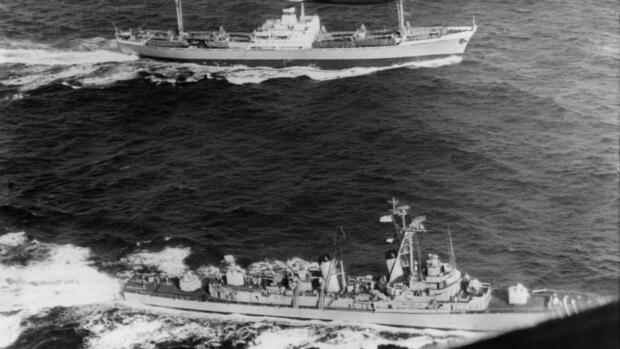US warship USS Barry (front) and the Soviet freighter Anosow off the coast of Costa Rica. During the Cuban Missile Crisis, the Barry controls the Soviet ship suspected of carrying Soviet missiles destined for Cuba
(Photo: dpa)
Brussels The most dramatic chapter of the Cold War began with black-and-white photos taken from an altitude of 21,000 meters: On October 14, 1962, an American U2 spy plane spotted Soviet technicians and soldiers in Cuba. Analysis of the images confirmed the suspicion that the Soviet Union was installing nuclear-capable medium-range missiles on the Caribbean island, less than 150 kilometers from the US coast.
From the American point of view, this was an unacceptable provocation: the US Navy sealed off Cuba with a naval blockade. Soviet leader Nikita Khrushchev was outraged by American “banditry” and ordered Soviet cargo ships to ignore US fleet radio signals. The world held its breath as Washington and Moscow headed for a nuclear confrontation.
Anniversary of the Cuban Missile Crisis and the Nuclear Fear: Warning of Nuclear Danger in the Ukraine War
Read on now
Get access to this and every other article in the
Web and in our app free of charge for 4 weeks.
Continue
Read on now
Get access to this and every other article in the
Web and in our app free of charge for 4 weeks.
Continue
